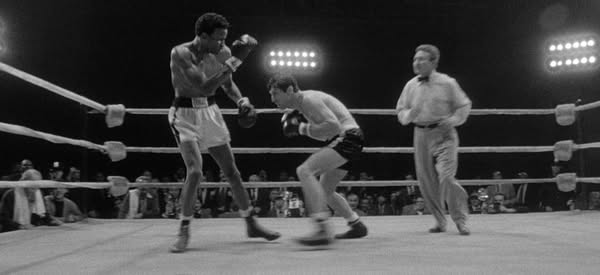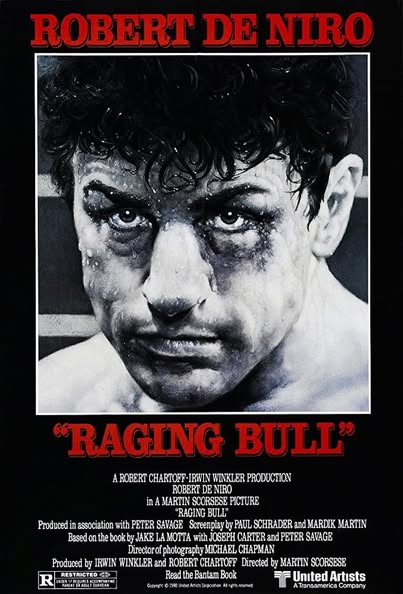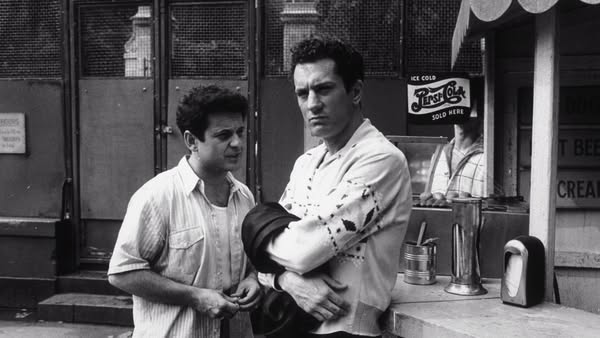Raging Bull (1980)

Raging Bull (1980) is a masterful piece of cinema that stands as one of the greatest sports films ever made, transcending the genre to explore the complexities of human nature, masculinity, and personal redemption. Directed by Martin Scorsese, the film is a biographical portrayal of the tumultuous life of boxer Jake LaMotta, based on the memoir by LaMotta himself. With its raw intensity, powerful performances, and striking visuals, Raging Bull has left an indelible mark on film history.
The narrative follows the rise and fall of Jake LaMotta (Robert De Niro), a gifted but volatile middleweight boxer whose fierce determination in the ring is matched only by his self-destructive tendencies outside of it. The film delves into LaMotta’s tumultuous relationships, particularly with his wife Vickie (Cathy Moriarty) and brother Joey (Joe Pesci), showcasing how his relentless pursuit of success in boxing leads to personal turmoil and alienation. As LaMotta grapples with his inner demons, viewers witness the devastating impact of jealousy, anger, and insecurity on his life and those around him.

Raging Bull is primarily categorized as a sports drama, but it is much more than just a film about boxing. Scorsese’s direction elevates the narrative, blending brutal fight sequences with intimate character studies. The film’s pacing allows for a deep exploration of LaMotta’s psyche, juxtaposing his triumphs in the ring with the emotional struggles he faces outside of it. The black-and-white cinematography by Michael Chapman enhances the film’s stark realism, capturing both the brutality of boxing and the fragility of LaMotta’s existence.

Robert De Niro delivers a transformative performance as LaMotta, showcasing his physicality and emotional depth. His commitment to the role is evident, as he gained significant weight to portray the character’s later years, illustrating the toll of his lifestyle. Joe Pesci and Cathy Moriarty provide strong support, bringing depth to their characters and highlighting the complexities of LaMotta’s relationships.
The film is also notable for its innovative use of sound and editing, with Scorsese employing slow-motion sequences and dynamic camera work to immerse viewers in the visceral experience of boxing. The haunting score, composed by Pietro Mascagni, further enhances the emotional weight of the narrative.

In summary, Raging Bull is a profound exploration of the human condition, encapsulating the struggles of a flawed man seeking redemption amid chaos. With its exceptional performances, powerful direction, and striking visuals, it remains a landmark achievement in cinema, inviting audiences to reflect on the nature of violence, love, and the quest for identity. Scorsese’s work in Raging Bull solidifies its place as a timeless classic that continues to resonate with viewers, making it a must-see for any film enthusiast.











